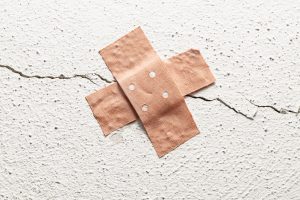 To keep everything running smoothly, whether it’s a car, house, computer, appliance, or fireplace, it requires maintenance. Regular maintenance requires small amounts of effort and money to maintain and upkeep a home, but it outweighs the effort involved in dealing with a much larger problem down the road, especially when it comes to plaster. Your plaster looks nice, but it can easily be damaged and need replacement if you don’t properly address some of the challenges of owning a home.
To keep everything running smoothly, whether it’s a car, house, computer, appliance, or fireplace, it requires maintenance. Regular maintenance requires small amounts of effort and money to maintain and upkeep a home, but it outweighs the effort involved in dealing with a much larger problem down the road, especially when it comes to plaster. Your plaster looks nice, but it can easily be damaged and need replacement if you don’t properly address some of the challenges of owning a home.
Weather Damage
Winter weather presents some especially difficult challenges if left alone, so it’s best to take care of your home during these icy conditions. For many New England homes, winter conditions can cause serious damage, especially ice dams. Ice dams are formed by heat escaping a poorly insulated house, causing snow to melt. The issue arises when this snow runs to the edge of the roof and freezes, effectively forming a dam. All the snow that falls on the roof then melts and pools behind this dam.
This water then begins to seep into the home, through the shingles. This creates massive water damage throughout the home. It may start in the attic, but it will quickly seep into your plaster and cause costly repairs. Your studs will eventually begin to warp and rot, and eventually both the structure and plaster of your home will need to be replaced.
Inversely, those living in somewhat warmer climates have to deal with moist basements. Proper airflow and dehumidifying is important to ensure water trapped underneath your ground floor doesn’t gather in your basement. If it does, you face similar problems with rotting joints, ruined walls, and sagging floors.
Weather plays a big part in how and when you need to repair your home, but ignoring the challenges it presents and allowing it to grow will only create costly repairs down the road. Being aware of what challenges you face in repairing your home is the best way to stay ahead of these repairs and take care of them early.
Regular Maintenance
Outside of major weather damage, there are several ways that you can ensure your plaster isn’t damaged. Poor drainage, whether it’s from clogged downspouts or a shifting foundation from poor drainage can cause cracks in your plaster. Clogged plumbing can create slow leaks that seep into your walls and cause interior water damage. Uneven weight throughout your house, i.e. a room full of heavy objects, could cause sagging joints, cracking the plaster.
There are several reasons why your plaster might be damaged, but you need to address the source of the problem before you invest in repairing it. Make sure that you inspect your home every year to see what might be causing damage. Sometimes you’ll catch a problem before it develops and save yourself a massive headache. It’s better to spend time and effort checking and addressing small problems than investing significant sums into large-scale repairs.
If you’re struggling with damaged plaster but you can’t figure out why, don’t immediately try to repair it. Sometimes you can make the situation worse. Instead try to focus on what might be causing the problem. If you’re unsure or simply can’t figure it out, give our team a call. We want to ensure you love your plaster walls and don’t waste money treating the symptoms and not the problem.
